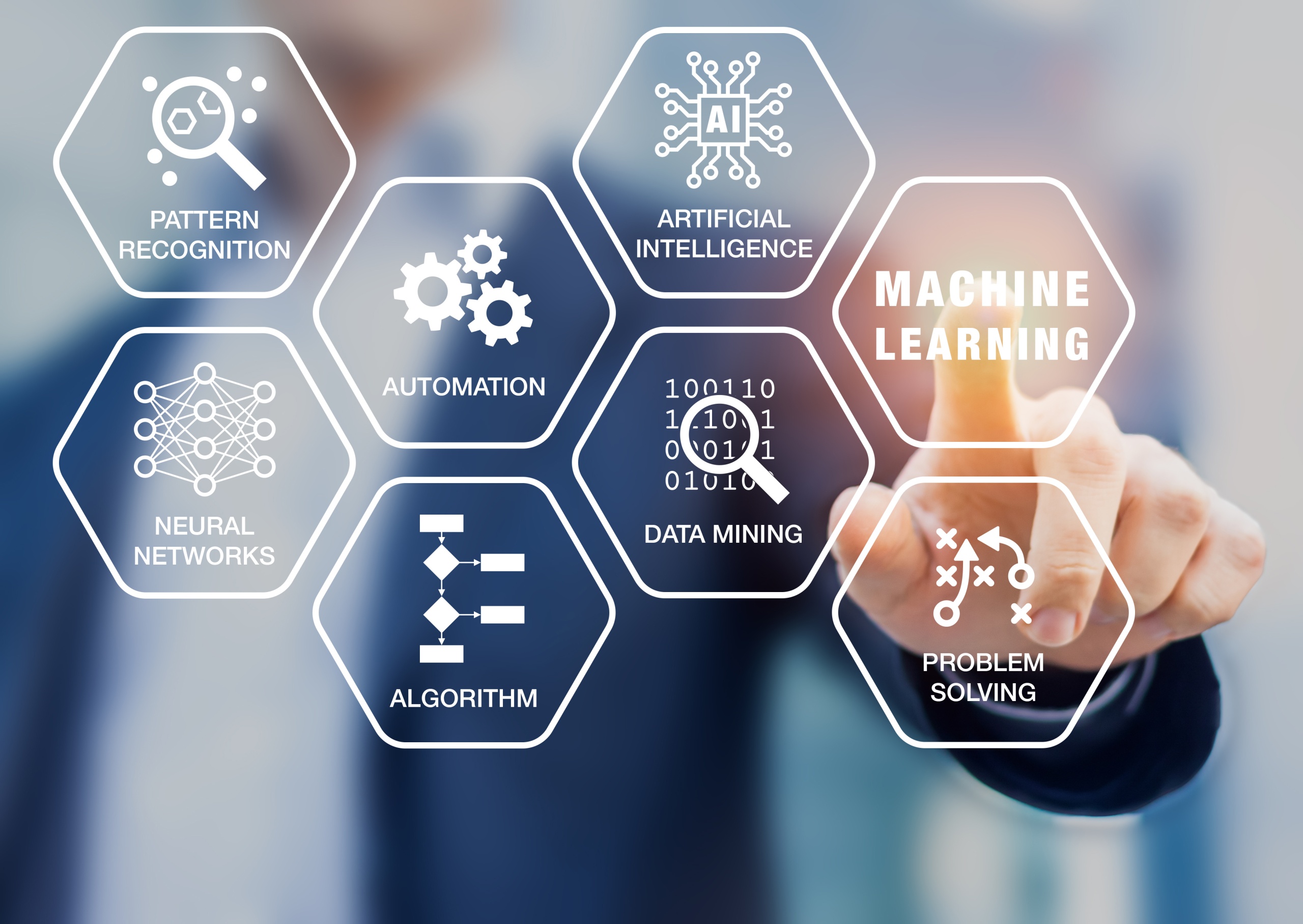In the ever-changing landscape of exam preparation, a new player has emerged: artificial intelligence.
Riiid, a Korean start-up established by YJ Jang, a graduate of the Haas School of Business at the University of California, Berkeley, is at the forefront of this movement. Riiid has already established itself in the Asian test-prep market for the TOEIC, a business English proficiency exam. Now, the business has set its sights on the American market with R.Test, a SAT and ACT prep system. With its mimicry of the networks of neurons in the human brain, AI technology has the ability to revolutionize the way educators handle their craft.
“R.Test makes it easy for students to solve practice problems, as well as read the explanations to help fill gaps in knowledge,” said Kelly Jung, a 9th grade student at Lighthouse International School in Korea who has used the program. “The post-test analysis was the most helpful part of the test, as it helped highlight both my weaknesses and strengths, allowing me to streamline my studying moving forward.”
This is not the first time that technology has been integrated into the classroom. The first forms of computer tutoring systems were created in the 1960s, but their tremendous cost and lack of widespread access limited their effect. Rule-based AI systems were adopted decades later, but they failed to live up to their promise due to scalability issues and the high cost of programming extensive domain expertise.
Jang first learned about the game-changing possibilities of deep learning at Berkeley. This type of AI enables algorithms to learn on their own, relying on massive amounts of data. Jang realized the educational implications of this technology and founded Riiid in 2014 after returning to Korea. The company’s data scientists created AI algorithms that track student behavior, predict scores, and predict when students will disengage. Riiid has accumulated one of the world’s biggest public education data sets, EdNet, through the use of their popular test-prep app, Santa.
However, gathering enough data to apply AI to the wider field of education remains a challenge. For the time being, Riiid is focusing on the lucrative test-prep market, where data is more readily available and easily collected, and has partnered with educational companies all over the globe to create test-prep apps. The success of the business has prompted a significant investment from SoftBank’s Vision Fund II, bringing Riiid’s total funding to more than $250 million. Riiid has the potential to dramatically change the way students prepare for their future with the forthcoming release of their AI-powered R.test platform for college entrance exams.
What is R.Test and how does it work for test preparation?
While there is no lack of SAT or ACT test prep options, none of them evaluate students based on real-time data. For example, Khan Academy’s SAT test prep connects to College Board, the SAT’s administrator, and assesses student weaknesses based on their most recent test, typically the PSAT. However, the statistics could be months old. R.Test is based on real-time data gathered from students as they use the system. Students can use the R.Test to quickly get their predicted scores for the full test by answering 30 questions, as well as learn practical insights such as weaknesses and exam habits.
R.Test uses a Fast CAT (computerized adaptive testing) algorithm that adaptively chooses a series of questions that can best determine a student’s test preparedness. This CAT algorithm drastically decreases the amount of time needed to evaluate student knowledge while still providing deep insights. With this technology, students only have to solve a minimal amount of questions instead of sitting for full-length exams to find out their scores. The R.Test Fast CAT algorithm reduces the length of test-taking by ¼. For example, the SAT college admissions exam takes 3 hours, but with R.Test powered by Fast CAT it only takes 44 minutes.
R.Test also offers other features, like predicting scores and a Knowledge Tracing model that opens up a data-driven way to prepare for exams. Based on the learner’s problem-solving data, the score prediction model predicts how the learner will fare on a standardized test. This is distinct from simply calculating how many questions you correctly answered out of a total amount of questions. What it does not do is award you 70% if you answer 7 questions correctly out of 10. What it does is that, even if you only answer a limited number of questions, the AI analyzes the complex information embedded in each question and how a student interacts with the question, taking into account factors such as the time spent answering it, and then predicts your score that is as accurate as the real exam. Through a beta test user survey in September 2022, 87.38% of students who already have ACT and SAT scores stated that their R.Test score predictions were reasonably accurate when compared to their actual test scores.
R.Test’s Knowledge Tracing (KT) model uses various approaches to correctly assess a student’s current knowledge levels. Based on how you perform on one question, the R.Test KT model can predict how you perform on future questions. This is possible through the use of the contemporary deep learning model called Transformers- as you solve questions, this model captures complex relations between knowledge components within the question and your responses to figure out your current state of skills and knowledge. The KT model allows you to spend more time on the information you don’t know so that you can prioritize the material you haven’t mastered yet instead of causing you to waste more time solving problems you will definitely answer correctly.
What is the relationship between artificial intelligence, machine learning, and deep learning?
Deep learning is a form of machine learning and artificial intelligence (AI) that mimics how humans acquire specific types of knowledge. Deep learning is a critical component of data science, which also includes statistics and predictive modeling. Deep learning is extremely beneficial to data scientists who are charged with gathering, analyzing, and interpreting large amounts of data; deep learning speeds up and simplifies this process. Deep learning can be thought of as a method to automate predictive analytics at its most basic. Deep learning algorithms are stacked in a hierarchy of growing complexity and abstraction, as opposed to conventional machine learning algorithms, which are linear.
To understand how deep learning works, consider a toddler whose first word is dog. By pointing to items and saying the word dog, the toddler learns what a dog is and is not. “Yes, that is a dog,” or “No, that is not a dog,” states the parent. As the toddler continues to point to objects, he becomes more conscious of the characteristics shared by all dogs. Without realizing it, the toddler is clarifying a complex abstraction (the idea of dog) by constructing a hierarchy in which each level of abstraction is made with knowledge acquired from the previous layer of the hierarchy.
Deep learning computer programs go through the same process as a toddler learning to recognize the dog. Each algorithm in the hierarchy performs a nonlinear change on its input and outputs a statistical model based on what it learns. Iterations are repeated until the output meets an acceptable degree of accuracy. Deep was inspired by the amount of processing layers that data must pass through.
The learning process in traditional machine learning is supervised, and the programmer must be extremely specific when telling the computer what kinds of things it should look for to determine whether an image includes or does not contain a dog. This is a time-consuming procedure known as feature extraction, and the computer’s success rate is entirely dependent on the programmer’s ability to precisely define a feature set for dog. The benefit of deep learning is that the program develops the feature set without supervision. Unsupervised learning is not only quicker, but it is also more accurate in most cases. Unlike a toddler, who may take weeks or even months to grasp the idea of dog, a computer program using deep learning algorithms can be shown a training set and sort through millions of images, correctly identifying which images contain dogs within a few minutes.
Why college students need to prepare for a world powered by artificial intelligence
AI has formally entered the realm of higher education, both theoretically and in early practice. According to Global Market Insights, the AI in Education Market is projected to grow at a compound annual rate of more than 40% between 2021 and 2027. With all of this buzz, there’s naturally a lot of confusion (and fear) about what AI is and how it might affect higher education. AI, which is defined as the creation of computer systems that use reasoning, logic, and other human traits to perform tasks autonomously, allows organizations to streamline processes and workflows through automation.
According to ZDNet, machine learning, a subset of AI, allows computer systems to analyze and learn from large datasets in order to finish complex processes. These systems are based on neural networks, which are dense clusters of algorithmic paths for transmitting, interpreting, and manipulating data. This technology creates the virtual minds that drive self-driving vehicles, facial recognition software, and predictive analysis models that forecast changes in consumer behavior.
As stated in the Enrollment Management Report, AI has the ability to transform colleges and universities of all sizes. When used to improve student outcomes, AI enables higher education institutions to predict enrollment patterns, optimize recruitment efforts, and improve academic performance. Based on the report findings, AI may cause many changes in higher education, both in before and during the college years. Findings predict that domestic and international student recruiting practices will change, the college admissions process will become more time-efficient and personalized, student retention efforts will become more proactive rather than reactive, and colleges’ reputational value will improve.




